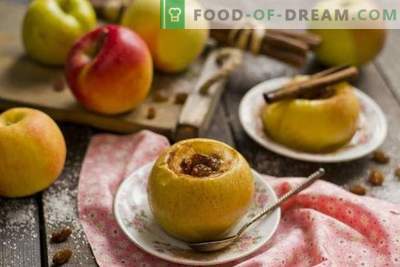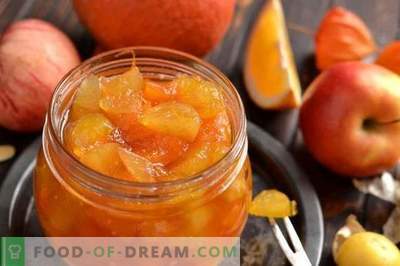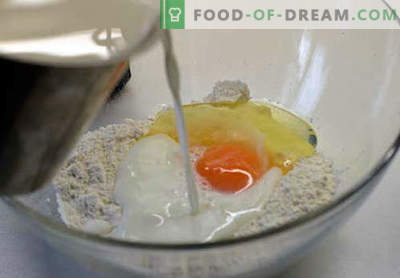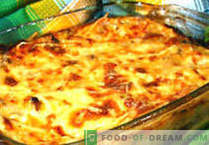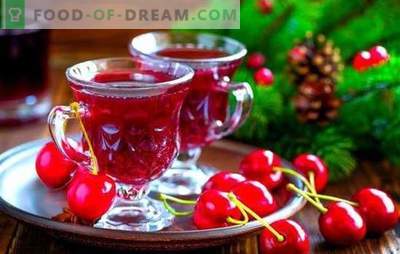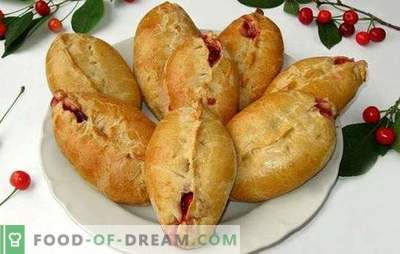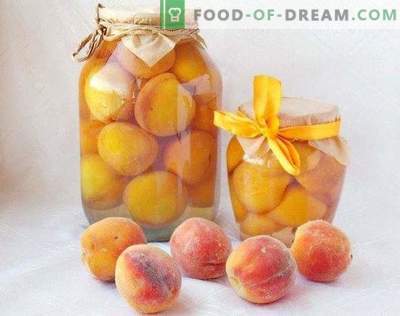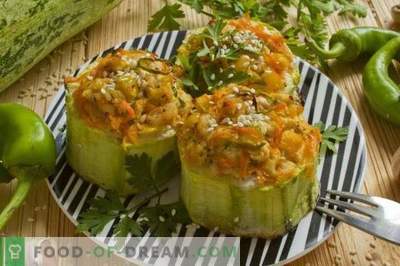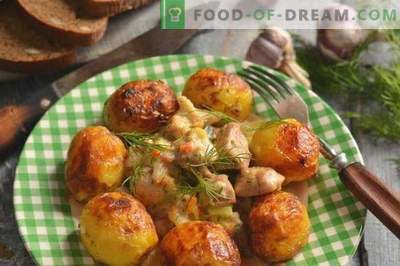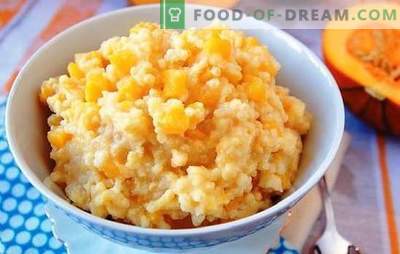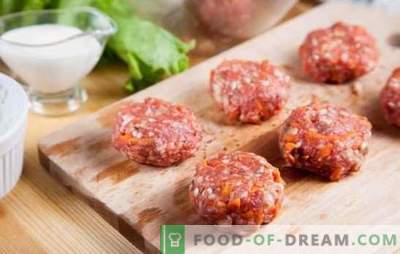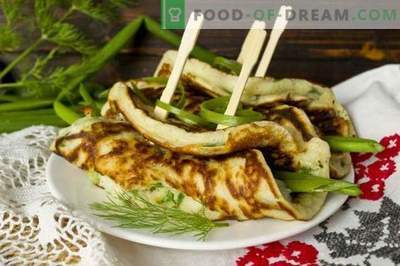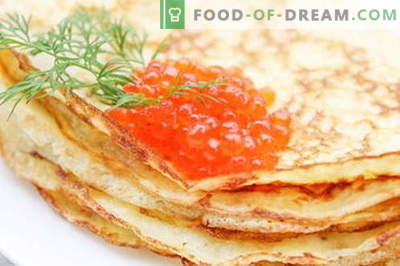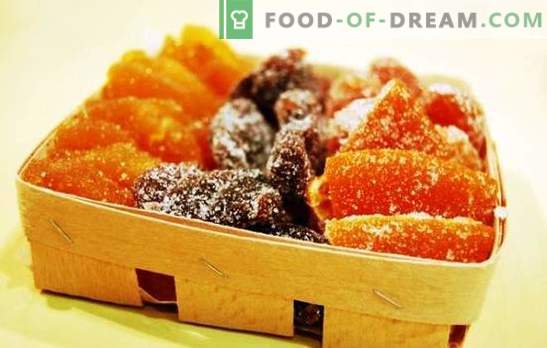
Candied fruit has a very interesting history of origin. Since ancient times, the recipe of their preparation has been known to every eastern woman.
In countries with a hot climate, when there were no refrigerators, they could not hope for snow and frost, and the need to preserve the harvest of sweet, exotic fruits was in every family.
Most likely, it was in the East that it was first noted that sugar is an excellent preservative. After all, it is there, under the sultry tropical sun, that they most often like to use the word “sweet” or “sweet”, and it is the zone of the tropics that nature inexpressibly generously endowed with fruit abundance, which in our temperate and northern regions can still be seen only in pictures.
But the middle zone of Russia is always famous for its rich apple crops. Everyone cooks candied fruits from what they have and apples are not worse, and some features of local fruits even allow making unusual candied apples from home.
Perhaps not by chance in the 14th century in Kiev, the recipe for “dry jam” was popular. These were tough times for Kievan Rus, with endless raids of the Mongol-Tatars, when scorched fields and gardens forced us to think about the harsh winter and food supplies. Although the Russian cuisine readily absorbed the culinary traditions of the neighboring peoples, but the Mongolian cuisine, despite the long period of the nomadic domination of the Russian lands, almost did not leave any traces of its influence, with the exception of drying food as a preservation method. Perhaps it was the nomads who, after passing raids across Asia, brought a recipe for “dry jam” from the East, and perhaps, having folded the first Russian oven, our ancestors accidentally dried an apple in it and opened the recipe for “dry jam” without knowing anything about sweet candied fruits and distant tropical countries, where on the eastern bazaars and now there are piles of trays of sweet “gems” on trays, past which it is impossible to pass so as not to buy them.
Only there is one “but”! Where candied fruits are on the shelves all year round, in great abundance, they are much cheaper than in a supermarket, opposite the house, where the price of dried fruit really resembles the price of gems. The recipes of “dry jam” are almost rarely remembered, and the “female mariners” - candied fruits, popular in the nineteenth century, and so named after the merchant who established their production, suddenly disappeared in the early twentieth century. Therefore, the only option - candied apples at home, and not only from apples - from all the fruits that can be coated with sugar syrup, and the syrup is not difficult to prepare - to cook yourself.
Candied apples at home - the basic technological principles
If you “turn on” the fantasy, you can make squares and balls from ordinary apples, flowers and starfish, rose petals and green leaves - everything! After all, such candied fruits can even decorate a royal dessert, or imperial. This is - by the way. Catherine II ordered by a separate decree to deliver refined delicacies of candied fruit to her table.
In the preparation of candied fruits there is, in addition to aesthetics, another goal - the preservation of valuable vitamins and minerals with this method of preservation.
When drying apples, except for water, some of the vitamins still evaporate, for example, vitamin C, which begins to oxidize when cutting fruit. To avoid this, sliced apples should be immediately placed in acidified water. Use for this a solution of citric acid, which, in addition to protecting the sliced fruit from the destructive effect of oxygen on vitamin C, will help speed up the drying of the slicing.
To not candied fruits become shapeless and ugly mass, use unripe fruits. They taste sour, but the sugar syrup will be what you need. In addition, by a happy coincidence, immature fruits always contain a greater amount of pectin, which binds water molecules, jelly juice, and pectin in apples even contains more than other fruits.
Pectin is an enzyme necessary for digestion. Therefore, in the manufacture of candied fruit, it can and should be added to “bind” the juice. Fortunately, buying it is not a problem. It is sold in the spice departments in every respectable supermarket. The confectionery industry in the manufacture of candied fruit uses burnt alum. They are also sold in the pharmacy or in the departments of spices. Both this and other supplements should be used in accordance with the instructions on the package. These substances should be added to the syrup during the last cooking. Sliced apples, after aging in an acidic solution, which will additionally give them rigidity and prevent boiling, first put into hot water with the addition of alum or pectin for 10-15 minutes, and then, after cooling, into boiling syrup, and cook for 5-6 minutes . After that, the apples need to get a skimmer, let them cool down a bit and roll in sugar. Then they spread on the grid in a single layer and heated in the oven to dissolve the sugar. The temperature for drying in the oven is not more than 40 ° C. The oven is turned off, and the candied fruit remains inside until it cools.
Next you need to prepare a thick syrup. Depending on the number of fruits, the volume of syrup begins to be cooked from the minimum, in equal quantities of water and sugar, to the sample “per drop”. Do not forget that at each subsequent stage of cooking apples in syrup, the juice from the apples will be released into it, and therefore the ratio of liquid and sugar will change each time in the direction of increasing liquid. But the syrup should remain very thick, so you need to check it every time, and, if necessary, add sugar and boil it again. At the end of the last cooking, molasses is added to it (also according to the instructions on the package); If molasses is not available, you can add a few drops of lemon juice or citric acid dissolved in water. The syrup forms the glossy surface of candied fruit.
Prepared candied fruits are dipped in a syrup, boiled with a strong boil for 5-6 minutes and spread on a grid installed on a drip pan. Then the syrup from the pan can be collected again in the pan, reheat it again, and again boil the candied fruits. This operation must be repeated until the candied fruit is transparent. For convenience, the grill can be installed directly on the pan so that the syrup drains directly into it, if you can pick up the dishes and the grill of a suitable size. After each boiling, candied fruits should be dried on a lattice for at least 10-12 hours. Therefore, we must take care that they do not sit on dust and insects, if the drying is not in the oven.
The last drying of candied fruits can last up to 7 days - they should not stick together in a can. You can speed up the process by placing them in the oven, but not warming it up at the same time so that the sugar does not start to melt. If you dry in the room, then it is necessary that the humidity was minimal. When storing the container should be sealed, and the air temperature does not exceed 20-25 oC. Now - some interesting recipes of beautiful and delicious candied apples from home.
In recipes - options for cutting, coloring and flavoring dry blanks, and the general technology of their preparation is described above, in great detail. The number of ingredients in the recipes is not indicated, since it depends on the volume of apples and their juiciness. Additional ingredients (powder, glaze) are used to taste. When making candied apples at home, it is more important to follow the basic technological principles of preparation.
Recipe 1. Red candied apples at home “Poppy petals”
Product Composition:
- Apples (technical ripeness)
- Cranberry Juice
- Sugar
- Poppy, pastry
Cooking:
Cut the prepared apples first with plates of 0.5 cm, and then from the plates, with a notch for cookies, cut hearts - this form is similar to a poppy petal. Cut the “petals” immediately into cranberry juice and soak the apples in it until the flesh turns red. Cranberry juice can be replaced with the juice of cherries, strawberries, beets - in the sour juice do not need to add citric acid, except beetroot.
Further preparation of candied apples fully complies with the general technology described above, and at the final stage, before drying, when the syrup is not completely dried, rub on the base of each “petal” a little bit of poppy seeds, and continue to dry the candied fruits. Later, when you decorate the cake, collect the petals 4 pieces each and fasten with green balls made of mastic.
By the same principle, you can make the petals and leaves of a different shape and color. For convenience, when cutting sliced apples, use large fruits.
Recipe 2. Candied apples at home in chocolate icing
Composition:
- Cutting from apples (free form)
- Sugar syrup
- Citric acid solution
- Pepsin or burnt alum
- Chocolate, melted
- Ground Nuts
Cooking: For candied fruit in chocolate glaze, cut the apples into cubes, with a side of 0.7-0.8 cm. Prepare them as described above. When the candied fruit is completely dry, place the cubes on a dish lined with foil. Grease the surface of the foil. Put candied fruits in one layer, at a short distance from each other. Pour with melted chocolate icing and tart with nut crumb. Place the dish in the freezer for a few minutes to allow the chocolate to harden. Put the cubes on a clean sheet of foil, also smeared with grease and lined on the dish, putting them chocolate side down. Pour chocolate over the top again and put the dish in the freezer.
Store candied chocolate candies in a closed container in the refrigerator.
Recipe 3. Candied apples at home - “ringlets” with cinnamon (coconut chips)
Composition:
- Alum, burnt
- sugar syrup
- Apples with dense pulp
- Citric acid solution
- Food colors (optional)
- Cinnamon, ground (or coconut)
Cooking:
Selected apples, with dense pulp, wash and remove the core from them, then cut them into plates, 0.5 cm thick, across.
The whole further cooking process is described in the basic technological principles. If desired, to decorate candied fruits, you can prepare several cups of citric acid solution, painted in different colors with food dyes or juices of vegetables and berries (spinach, blueberries, carrots, beets).
During the last drying of candied fruits, if desired, the “ringlets” can be triturated with ground cinnamon or coconut chips to give the candied apples an unusual aroma at home, and the coconut chips, in addition, will make the products beautiful, hovering like frost. Just do not combine cinnamon and coconut chips together - these supplements are very fragrant and do not combine with each other.
Recipe 4. Candied apples at home in orange syrup
Composition:
- Orange juice
- Peel, fresh
- Apples
- Sugar
- Pectin
- Citric acid (solution)
Cooking:
The whole process is repeated, as described above, but the syrup is prepared not from water, but from fresh orange juice. The initial volume of syrup is 200 ml of juice, 300 g of sugar per 1 kg of sliced and peeled apples.
Remove the fresh orange zest from the fruit using the finest grater. Add part of the zest to the syrup during the last brew, and sprinkle the rest of the rind candied fruit during the last drying. Orange juice can be replaced with peach, quince, strawberry. Use any options you like.
Recipe 5. Candied apples at home - “kegs” with cherries
Composition:
- Apples
- Cherry, seedless, dried
- Sugar syrup
- Burned alum
- Water
- Citric acid
Preparation:
Select small apples. You can use the bald box, but without damage. Wash and remove the core. Remove bones from selected cherries. Boil apples with the peel in boiling water, adding alum. Remove them with a slotted spoon and cool. In the same water, boil the prepared cherries. Put them on another dish. Until the last boiling in the syrup, dip the fruits one by one in it. Inside each apple, put 2-3 cherries in place of the core. Add the syrup to the syrup and boil the stuffed apple “kegs” together. After drying, as usual.
Recipe 6. Candied apples at home - bulk apples
Composition:
- Sugar syrup
- Apples, whole
- Liqueur (or brandy)
- Vanilla
Preparation:
In a cup of liqueur or brandy pour vanilla and sugar. Stir. Take a medical syringe with a thick needle, put “medicine” into it and dice every apple, injecting the prepared syrup.
Subsequent preparation steps are carried out in accordance with the candied preparation technology described above.
Tip: for candied whole apples, select dense apples of small sizes. Otherwise, boil large berries in syrup will have many times.
Candied apples at home - tips and tricks
- Pies often burn when baking, because the filling (jam, jam, jam, fresh apples) flows on the baking sheet. With candied fruits this will never happen, but to enhance the flavor of apples, sprinkle the pieces with alcoholic extract.
- After curly slicing pieces for candied apples, pruned fruits remain at home. They can be used for cooking jam, preparing juices and mashed potatoes. In the home “production” can not be unhealthy waste.
- Candied apples, designed to decorate cakes or other dishes, should be candied without peels to give a beautiful appearance to the products. But the peel contains pectin, which is necessary for gelling the juice in the preparation process, as well as the essential oil, which gives the apple flavor to candied fruits. Therefore, cut the skin when cooking, throw in the pan separately, so that later you can easily remove it.







